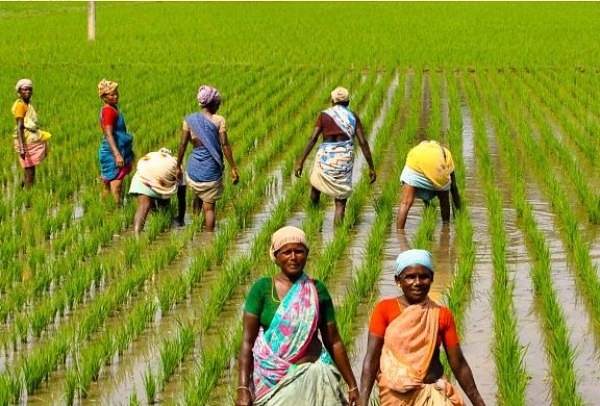
Economic Survey Calls For A Different Approach To Irrigated And Non-Irrigated Farming
The Narendra Modi Government had talked about doubling farmers’ income by 2022. The 2017-18 Economic Survey, tabled in Parliament by Finance Minister Arun Jaitley on Monday (28 January), says the Centre will have make a clear distinction between two forms of agriculture in India.
“There is an agriculture – the well-irrigated, input-added, and price-and-procurement-supported cereals grown in Northern India – where the challenge is for policy to change the form of the very generous support from prices and subsidies to less damaging support in the form of direct benefit transfers,” the survey pointed out.
“Then there is another agriculture (broadly, non-cereals in central, western and southern India) where the problems are very different: inadequate irrigation, continued rain dependence, ineffective procurement, and insufficient investments in research and technology (non-cereals such as pulses, soybeans, and cotton), high market barriers and weak post-harvest infrastructure (fruits and vegetables), and challenging non-economic policy (livestock). It is easy to say what needs to be done. How this will happen given that agriculture is a state subject is an open political economy question,” the survey said.
The report is significant since 52 per cent of area under agriculture in the country is still rain-fed and unirrigated.
The survey called for a cooperative federalism “technology” of the GST Council, that brought together the Centre and the states, to further agricultural reforms and raise farmers’ incomes. The survey, stressing on effective change in crop insurance, said farmers should be compensated within weeks for their losses.
The survey came up with a newly-compiled weather data and methodology that showed the impact of temperature and rainfall being felt when temperatures are significantly higher and rainfall lower (the number of dry days higher than normal). The impact is more severe in the case of non-irrigated areas.
A correlation between average temperate and rainfall during the kharif season (starting with sowing operations in June and end with harvest in October) shows that farmer incomes could be 15-18 per cent lower due to climate change. In the case of unirrigated areas, the income losses could be as higher as 25 per cent. The survey said that a rise of 1 degree Celsius in temperature leads to 6.2 per cent drop in farmers’ income. If the rainfall was 100 mm lower than average, farmer income drops 15 per cent for the kharif crop and 7 per cent for rabi crop (sowing starting in November and harvest ending in April).
How will the government address the issues of climate change and farmers’ income is something to watch out for in the Union Budget. Nevertheless, the government has done a good job in unravelling the mystery of climate change in agriculture. It has also done well to draw a distinction between irrigated and unirrigated areas. Will the government come up with an improved crop insurance programme that will also redress farmers’ grievance within weeks?
Finance Minister Arun Jaitely should answer this when he presents the 2018-19 budget on 1 February.